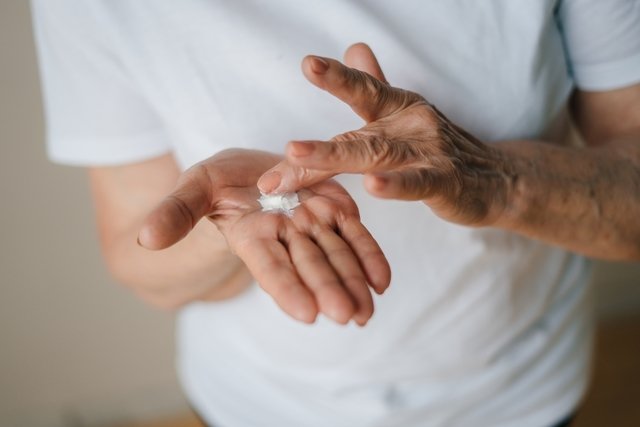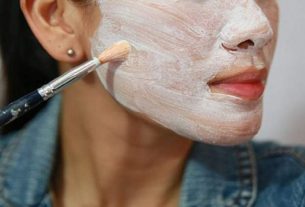To remove the callus from your hand, it is recommended to soak your hand in warm water for a few minutes, exfoliate with a pumice stone and moisturize the area. This is because these steps help to soften and remove calluses, in addition to preventing the formation of new calluses.
Calluses are hard, thick areas that appear on the outermost layer of the skin, due to constant friction or pressure, and that develop to protect the skin of the hands or fingers. Understand better what calluses are.
In cases of calluses on the hand with pus or blood, or when the calluses persist despite the previous tips, it is advisable to consult a dermatologist to discover the possible causes of the callus on the hand and indicate the appropriate treatment.

5 steps to remove calluses from your hands:
The steps to remove callus on your hand at home are:
1. Soak your hand in warm water
One of the simplest ways to remove calluses from your hands is by placing your hand in a basin of warm, soapy water. It is recommended to leave your hand in the water for about 10 minutes or until the skin softens, making it easier to remove the callus.
2. Exfoliate with a pumice stone
Exfoliating the callus with a pumice stone is also a great way to remove excess keratin that causes calluses on your hands.
After soaking your hand in water, you should rub the callus gently in circular movements to remove the dead skin. It is important not to remove too much skin to avoid bleeding or infection.
Furthermore, to exfoliate the callus you can also use remedies in the form of ointments, gels or solutions that facilitate the removal of the callus on your hand. Check out other remedy options to remove calluses.
3. Moisturize your skin
Moisturizing the skin gradually softens hard calluses, helping to remove them, as well as keeping the skin soft, preventing calluses on the hands. To do this, simply wash your hands well and then apply a moisturizer to the callus daily, using circular movements.
4. Use corn protector
To avoid a new callus on your hand, it is recommended to protect the area where the callus appeared to reduce friction and pressure. Therefore, you can use callus protectors, which are made of foam and are found in pharmacies.
Another tip to avoid friction and pressure on the callus on your hand is to use a bandage made with micropore tape and gauze. Furthermore, workers or those involved in physical activities who lift weights can wear thick rubber or fabric gloves, for example.
5. Consult a dermatologist
It is recommended to consult a dermatologist when the calluses on your hands do not come off, even with the previous tips, or in cases of persistent calluses.
Furthermore, in the case of calluses with bleeding and/or pus, as well as people with diabetes or circulation problems, they should also consult a dermatologist to find out the cause of the callus on their hand and recommend the most appropriate treatment.
If you want to see a specialist, make an appointment with the closest dermatologist in your area:
Taking care of your health has never been easier!
Bibliography
- AMERICAN ACADEMY OF DERMATOLODY ASSOCIATION. How ro treat corns and calluses. Disponível em: <https://www.aad.org/public/everyday-care/injured-skin/burns/treat-corns-calluses>. Acesso em 14 jun 2023
- MAYO CLINIC. Corns and calluses. Disponível em: <https://www.mayoclinic.org/diseases-conditions/corns-and-calluses/diagnosis-treatment/drc-20355951#:~:text=Soaking%20corns%20and%20calluses%20in,file%2C%20emery%20board%20or%20washcloth.>. Acesso em 14 jun 2023

Sign up for our newsletter and stay up to date with exclusive news
that can transform your routine!
Warning: Undefined array key "title" in /home/storelat/public_html/wp-content/plugins/link-whisper-premium/templates/frontend/related-posts.php on line 12
Warning: Undefined array key "title_tag" in /home/storelat/public_html/wp-content/plugins/link-whisper-premium/templates/frontend/related-posts.php on line 13





